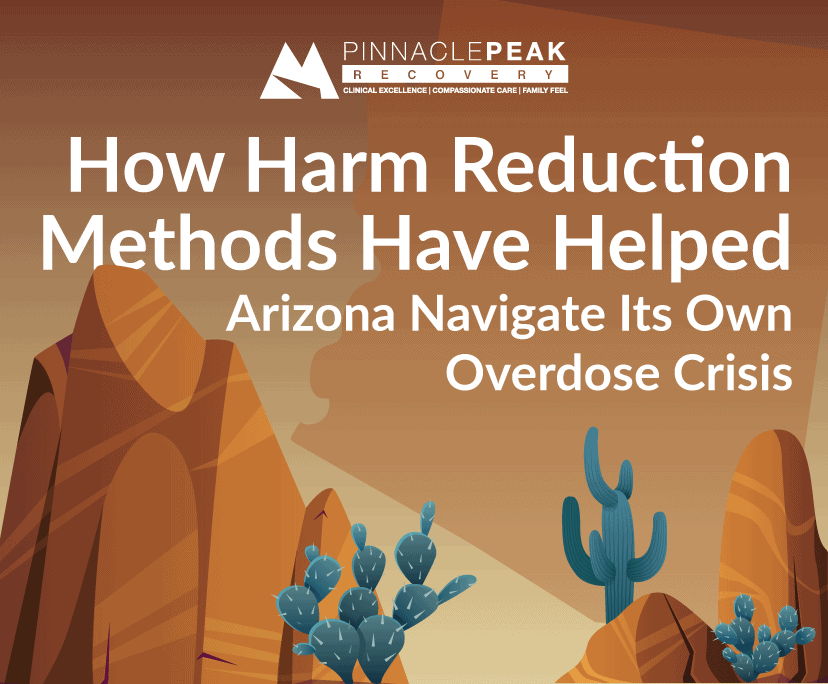The opioid crisis has been well underway for decades in the U.S.; lately, however, with the increase in popularity of Fentanyl, the problem has escalated dramatically. Fentanyl is a synthetic opioid up to 50 times stronger than heroin and 100 times stronger than morphine.
The substance has many analogs which can be even more potent. According to the U.S. Sentencing Commission, analogs such as alfentanil and carfentanil are 600 and 10,000 times more potent than morphine, respectively. Additionally, they report that virtually all fentanyl and its analogues in the black market are illicitly made.
The results of the current situation, with a variety of drugs being laced with Fentanyl and its analogs, have been catastrophic. Overdose death rates skyrocketed and show no signs of slowing down. Most people have, or know someone who has, lost a friend or family member to overdose. Addiction and overdose deaths have become an epidemic affecting all demographics.
In her book Raising Lazarus, journalist Beth Macy explains that since OxyContin entered the market in the mid-90s, more than a million Americans have died of a drug overdose. With the current Fentanyl crisis, she projects that, by 2030, overdose deaths are on course to reach two million. The Arizona Department of Health Services (ADHS) reports that opioid overdose kills more than five people die every day. In Maricopa County, the death rate from synthetic opioids has increased by 6000% since 2012. Ignoring the issue is no longer possible.
At this point, harm reduction efforts become imperative for balancing this health crisis and keeping people safe. It’s unreasonable to think that people will just stop using drugs, so providing resources for safer drug use is very important to keep people alive until they decide it is time for recovery.
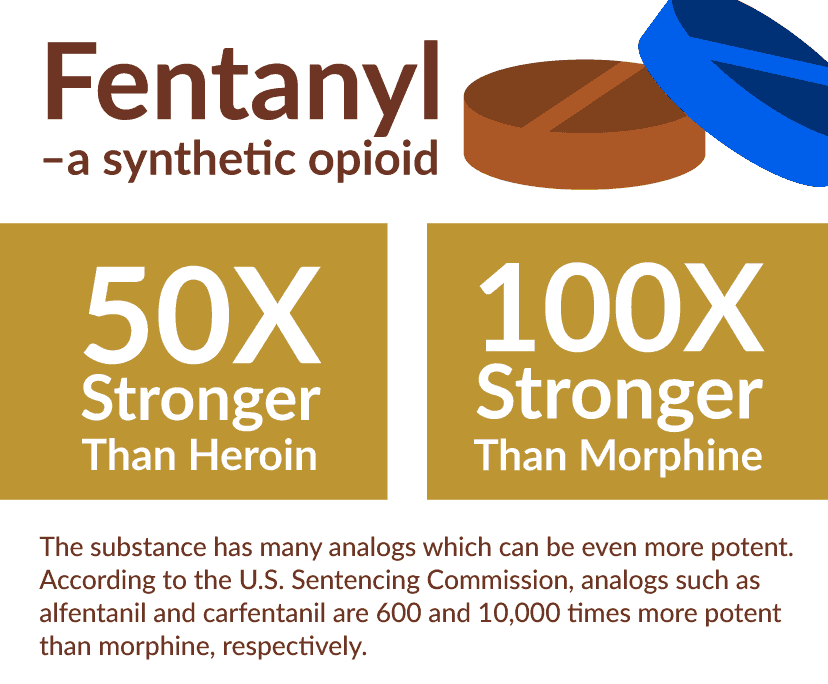
The harm reduction movement has its roots in social justice and draws from efforts started in the 1960s with the civil rights movements with the rise of free clinics across the country. It has grown and adapted to the changing drug crisis. Organizations use their interactions with people struggling with drug addiction to understand their needs and cater services to the community.
Such organizations provide supplies for safer drug use, such as clean syringes, Naloxone, overdose prevention tips, Fentanyl test strips, test sites for HIV and Hepatitis C, hygiene kits, and peer support.
Arizona has essential non-profit organizations actively helping the community, such as Shot in the Dark (SITD) and Sonora Prevention Works (SPW) which started in 2010 as Phoenix Harm Reduction Organization.
Syringe Services Programs (SSPs)
Sharing or using old syringes has led to an epidemic of HIV and Hepatitis C among intravenous drug users and other medical complications such as abscesses. According to the Centers for Disease Control and Prevention (CDC), syringe services programs (SSPs) reduced by 50% the incidence of HIV and Hepatitis C.
The CDC also claims that “people who inject drugs which regularly use an SSP are more than five times as likely to enter treatment for a substance use disorder and nearly three times as likely to report reducing or discontinuing injection as those who have never used an SSP.” Through harm reduction programs, people struggling with drug addiction find themselves healthier, contributing to their realization that recovery is attainable.
Although SSPs still struggle with the acceptance and support of the rest of the community, such programs have shown great success not only for the people who use drugs but also for the general public. Cities with SSPs present a higher rate of proper disposal of used syringes than cities without SSPs, which see eight times more littered needles in the streets. As reported by the CDC, law enforcement officers and first responders are especially at risk of being struck by a used syringe, and SSPs diminish these chances by 66%.
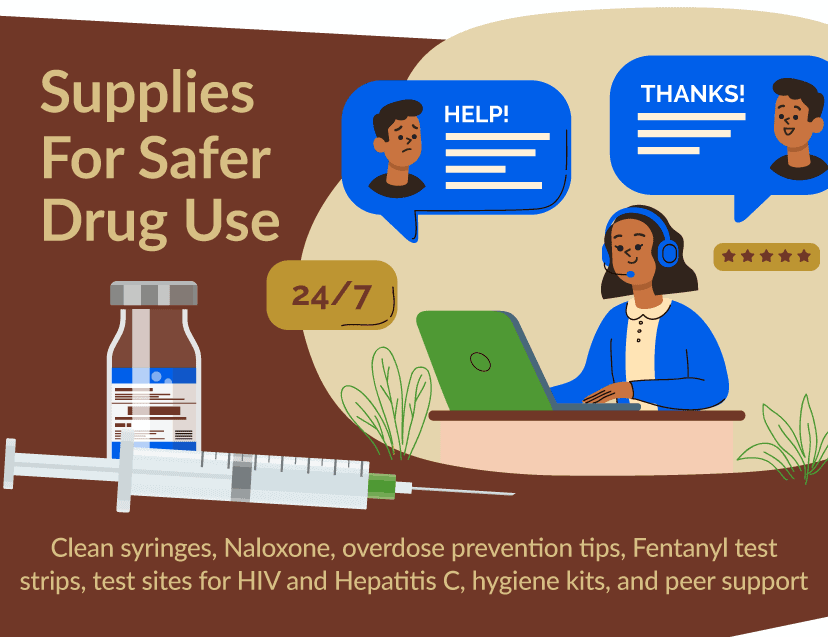
Overdose Prevention
Another essential service harm reduction organizations provide is the distribution of the overdose reversal drug, Naloxone, along with overdose prevention, recognition, and response training. Not limited to just people using drugs, this service also provides Naloxone to first responders, family, and friends of people struggling with drug addiction.
In Arizona, Naloxone is legal, and pharmacies should sell the drug to anyone inquiring by standing order from the Arizona Department of Health Services. To people with financial means, the drug is more accessible.
SPW, a large distribution center of naloxone, reports 16,714 overdose reversals self-reported from 2017 to 2021 under their belt, with 6,516 (38%) overdoses reversed just last year. The 2021 numbers, however, could have been even greater if it wasn’t for a national shortage of intramuscular Naloxone.
Many organizations also had to adapt to the COVID-19 pandemic and started mailing Naloxone to people when face-to-face interactions became difficult. This adaptation also helps people in areas without access to harm reduction organizations.
Fentanyl test strips are also essential for overdose prevention. When one buys cocaine, meth, or ecstasy, it is impossible to know by looking at the drug whether or not it contains Fentanyl. These street drugs are the most commonly mixed with Fentanyl. However, this synthetic opioid has been found in Adderall, Xanax, and even weed. The test strips give quick results and are easy to use, but it only tests for the absence/presence of Fentanyl. It does not give you a ratio. Many users of illicit drugs also point to the fact that every drug they buy these days is laced with at least some amount of Fentanyl, so they don’t see much point in using the test strips. This just goes to show how overwhelming this problem has become.
Peer Support
Peer support encompasses many strategies to reach people struggling with drugs. We interviewed Robert C., a SITD volunteer, which attests that the non-profit organization can touch people’s lives by just showing respect and giving drug users dignity. While most people marginalize people struggling with addiction, efforts as simple as having a conversation and becoming an ally can help them reclaim their humanity and dignity. That can give them confidence and boost their self-esteem, which can significantly improve their chances of recovery, as found in a study published by Addict Health.
Robert C. explains that the best way to get through and gain people's trust is to be welcoming without being preachy and pushing pamphlets. At their popup, they display a binder of resources and guides with information about recovery and mental health facilities, programs to help with employment, health care, child care, etc. That allows people to browse when they are curious without the pressure of having to talk to someone if they are not ready.
Friendly and non-judgmental information becomes key to successful outreach. There are many reasons people shy away from treatments. Some are afraid of it, some have enormous outdated misconceptions, some don’t think they can afford it, and others have experienced mistreatment from the medical community.
Another effective service offered by harm reduction organizations is lists of non-hostile doctors. Those are providers who have previously given proper treatment to people struggling with drugs and friendly pharmacies where people could purchase needles if they are in dire need.
Robert, now sober, recalls his mistreatment during a hospital stay. It started with the paramedics after he called 911, whom he felt were looking down on him, and extended to nurses and doctors that just pushed him aside without assessing priority. He was dismissed and left to sit in the waiting room as he did not feel safe going back home in his state.
Such treatment from the health care system draws people away from seeking immediate medical help. A research study published in the International Journal of Drug Policy exposed that, in Maricopa County, 34% of the interviewees did not seek medical treatment after previous negative experiences dealing with the healthcare system. Their complaints ranged from medical and social mistreatment to verbal and physically abusive behavior.
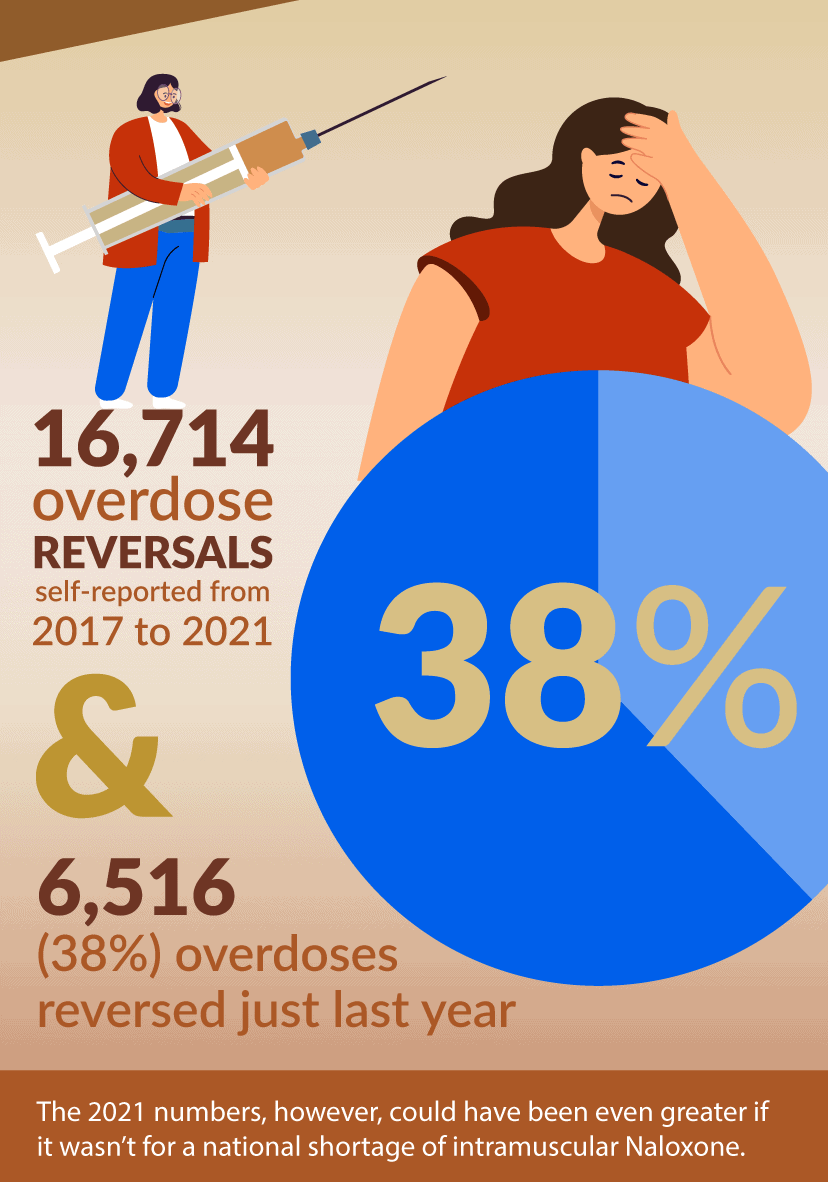
The Fentanyl Crisis
In December of 2021, Scottsdale police made a record-breaking Fentanyl bust of 360 pounds ($9 million estimated value) believed to belong to the Sinaloa Cartel. The Phoenix area is notoriously known to be a drug route and center of distribution for illegal drugs.
The most dangerous part of the Fentanyl crisis is that the substance can be made illegally and cheaply. Drug dealers began using Fentanyl to cut other substances to make them stronger and cheaper to produce.
With that, two issues came to the surface:
- First, people using other drugs besides opioids started consuming opioids without knowing unless one has access to Fentanyl test strips. Also, it doesn’t take long for the body to become dependent on opioids. That said, someone using drugs regularly can develop opioid dependence without knowing it.
- Second, because untrained people illegally produce it, each batch of Fentanyl has a different dosage. And drug dealers don’t have the ability or care to control the amount of Fentanyl on each pill or other drugs laced with the opioid. When someone uses street-bought drugs, it is a gamble whether or not the Fentanyl dosage is fatal or not. As said in campaigns, “one pill can kill.”
People using drugs, unaware of the existence of Fentanyl on their drug of choice or the amount included, become victims of this silent killer. It’s not surprising that the U.S. has been experiencing a health crisis. Fentanyl has become the leading cause of death in the U.S. for people between 18-40.
In the past two years, Arizona has seen an increase of over 48% in fentanyl-related overdose deaths as reported by the CDC.
Arizona Efforts in Harm Reduction
Arizona joined the efforts to prevent the overdose crisis from worsening. In May of 2021, Governor Ducey signed bill SB1486 into law which removed Fentanyl test strips from the category of illegal drug paraphernalia. The class includes anything related to drug production and consumption. When signing the bill into law, Governor Ducey stated:
“We want everyone who is using drugs to seek professional treatment. But until someone is ready to get help, we must ensure they have the tools necessary to prevent a lethal overdose.”
Another important law that makes harm reduction a superior service, SB 1250, legalized the distribution of clean needles to people living with addiction. At the first run, the proposal passed in the house but lost in the Senate. On a second attempt, in 2020, the bill passed unanimously.
Organizations still provided services before the legalization of clean needle distributions, making volunteers vulnerable to prosecution. Robert C., from SITD, recalls setting up the popup services and having to pack up and relocate when citizens approached them negatively and threatened to call the police. Organizations aim to educate people on the importance of their services and work with the community to not leave a footprint on the locations of their pop-ups, such as a community cleaning effort to clean and dispose of any used needles or drug paraphernalia that people using drugs would leave behind.
Relocating their services last minute meant that people coming to the usual location lost the opportunity to acquire safe, clean needles until they found out the new time and place that the services were being provided. Now, with the legalization of their services, they can’t be charged and are usually not bothered by law enforcement. It is now a more stable service.
Previously laws also included the legalization of the opioid overdose drug, Naloxone (HB 2355) in 2016 and the Good Samaritan Law (Arizona Revised Statutes 13-3423) passed in 2018, which protects people seeking overdose medical help from prosecution for drug possession.
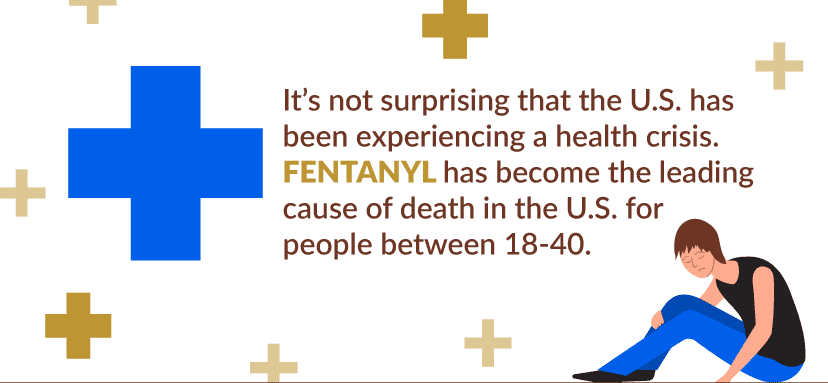
What Is the Future of Harm Reduction?
With new bills signed into law, Arizona's harm reduction efforts have momentum. There is so much more to achieve.
One size does not fit all when it comes to drug addiction treatment programs.
The abstinence-only and tough love approaches still marks the majority of opinions of legislators and people in general. Politicians fear looking soft on the war against drugs, and Nancy Regan’s “Just Say No” catchphrase prevails. It falls for groups such as SITD and SPW to educate people and enlighten their views with the efficient efforts of their organizations.
There are many approaches that harm reductionists can take to justify the importance of their work. When drawing compassion and understanding from the community fails, they argue about the financial savings the programs offer to society. Harm reduction can save the state money by preventing people from contracting infections and serious diseases such as Hepatitis C and HIV, which cost a lot of money. SPW explains that “the lifetime cost of treating a person living with HIV is estimated to be between $385,000-$618,900, while hepatitis C costs $100,000-$500,000 to treat.” Syringes cost far less than that.
Beth Macy registers in her book, Raising Lazarus, that, during the rise of OxyContin, the medical field still saw doctor-caused addiction as extremely rare and that “the typical doctor has been in one and four hours of training” in addiction and pain. With drug addiction and overdose soaring in the U.S., this lack of training is unacceptable. There must be a substantial change in how the medical community prepares for addiction treatment to rightfully serve people struggling with drug use.
FDA-approved medications, such as Suboxone, Vivitrol, and Naxan, i.e., will help with the withdrawal process and relieve drug cravings, thus making the transition into recovery more attainable. Opioid withdrawal symptoms are notoriously hard to endure, and stopping “cold turkey” can be extremely challenging with a low success rate.
Combined with other treatment approaches such as therapy and relapse prevention, MAT can be life-changing for someone struggling with drug addiction. It carries a higher rate of recovery with lower relapse rates than counseling-only treatments, according to Beth Macy.
In addition, we must improve the distribution of harm reduction supplies. Organizations still lack the funding to make their outreach more effective, relying on donations and volunteers. When it comes to Naloxone, for example, a study published by the Journal of Health Care for the Poor and Underserved found that only 12.4% of Arizona organizations actively distributed naloxone.
On a national level, there is good news about the expanded distribution of Naloxone nasal spray, Narcan, in free vending machines. Such vending machines have been installed in jails in Indiana and North Carolina. The N.I.C.E. Project (Narcan in Case of Emergency) just inaugurated its first 24/7 free Narcan vending machine in a homeless shelter in Austin, TX. In addition, San Diego County in California and Pierce County in Washington also announced their intentions to install free vending machines open to the public.
The U.S. also welcomed its first safe injection site earlier this year in New York, with cities such as San Francisco, Denver, and Philadelphia showing interest. Politicians are still needing to catch up with the initiative, however. The Governor of California, Gavin Newsome, vetoed the state senate’s bill for the legalization of safe injection sites. Lawmakers in Denver also voted against it, just like the three-panel judge in Philadelphia.
Safe injection sites would help fight overdose deaths, especially for people using drugs alone. For now, harm reduction organizations advise people not to use drugs alone or to use resources such as Never Use Alone. The 24/7 response hotline operated by volunteers stays on the phone with the person using drugs to ensure they are okay. If unresponsive for more than 30 seconds, they call first responders to help prevent overdose death.
Drug checking is another potential tool to prevent overdoses in the U.S. with machines such as mass spectrometry or infrared spectroscopy, which give the composition of the drug tested and can help monitor the drug supply on a community level. Although it’s been around for over 25 years in Europe and recently in Canada, it is still a very new concept in the U.S. The machine has a more comprehensive analysis of the drug compared to the Fentanyl test strips. Until drug checking becomes more available, the convenience of the test strips makes it a more accessible resource since someone using drugs can carry many test strips and get instant results on their own.
Safe smoking kits and snorting kits should be the following items to be legalized to advance efforts to keep people using drugs healthier. During an interview for the Pinnacle Peak Recovery podcast, Facing Addiction, Haley Coles, founder of SPW, explains how people in Arizona have been switching from intravenous drug use to smoking because of the popularization of Fentanyl pills (M30), which cannot be cooked down. “We did all this work around SSPs, and it legalized syringes. It didn’t legalize foil, pipes, or any other supplies we need to engage with people who smoke Fentanyl instead of injecting.”
This face-to-face interaction with people using drugs is a significant part of harm reduction organizations. They need these exchanges to learn the current needs of people to evolve their practices and serve the community better. And to distribute supplies beyond syringes such as wound care kits, hygiene care kits, and information about resources available.
Contrary to some people's opinions, SSPs have not been proven to boost drug use or contribute to street violence in the communities they serve. Harm reduction organizations combat stigmas and marginalization of people using drugs and embody compassion and social justice. Instead, it meets people where they are in their journey, keeping them alive in hopes that one day they will be ready to start their road to recovery. And when that time comes, we will be prepared to aid them and find the proper treatment.
When Robert C., from SITD, found himself ready for treatment, he went to Pinnacle Peak Recovery for our 30-day outpatient program. He benefited from the many forms of therapy offered, which he stated helped him reconnect with his inner child. Unlike other facilities, which felt very sterile and like psychiatric wards, Pinnacle Peak felt personable and warm. When it comes to recovery, finding the correct route is key to success. In addition to our outpatient program we also offer an inpatient and detox program.
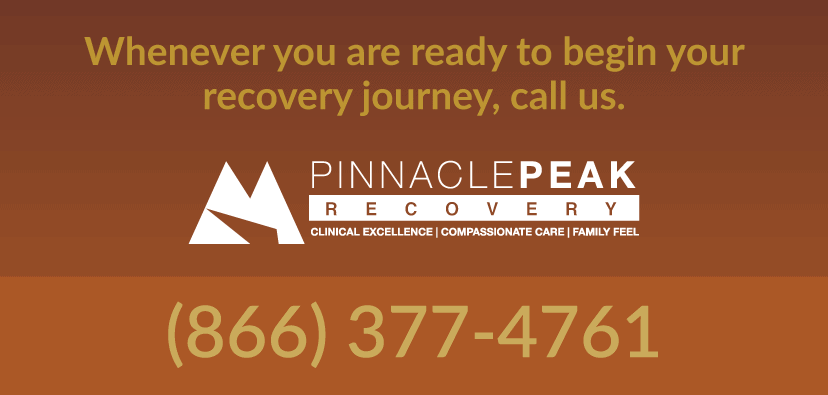
Whenever you are ready to begin your recovery journey, call us at 866-377-4761. A Pinnacle Peak Team member will assess your situation and start planning treatment for you. Substance use treatment should be available to everyone. We accept major health insurance plans and discount self-pay rates those without insurance.

